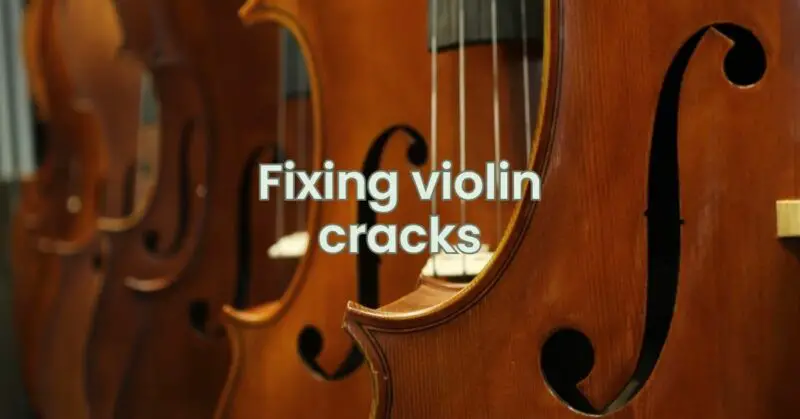Cracks in a violin can be a distressing sight for any musician, but with careful attention and the right techniques, many cracks can be effectively repaired, allowing your instrument to continue producing its beautiful melodies. Whether your violin has suffered from a minor mishap or simply shows signs of wear over time, addressing cracks promptly and skillfully can prevent further damage and preserve its integrity. In this article, we’ll guide you through the process of fixing violin cracks, helping you restore both the instrument’s appearance and its enchanting sound.
Assess the Severity
Before you begin the repair process, carefully assess the severity and location of the cracks on your violin. Determine whether the cracks are minor or more extensive, and whether they affect the sound-producing parts of the instrument, such as the top, back, or sides.
1. Secure the Cracks
If the cracks are not causing the violin to come apart, you can use a bit of low-tack masking tape to gently secure the edges of the crack in place. This prevents further spreading while you prepare for repair.
2. Clean the Area
Clean the area around the crack using a soft, damp cloth. This removes any dirt or debris that could affect the repair process.
3. Assess the Damage
Assess whether the crack requires immediate repair or if it’s more superficial. Deeper cracks, especially those affecting the sound-producing parts, should be addressed promptly to prevent further structural damage and to maintain the instrument’s tone.
4. Gluing the Crack
For cracks that are not too severe, you can use a specialized violin glue (hide glue) to mend the wood. Follow these steps:
- Prepare the Glue: Prepare the hide glue according to the manufacturer’s instructions. It should be warmed to an appropriate temperature for application.
- Apply the Glue: Use a fine brush to apply a small amount of glue to the crack. Work carefully, applying even pressure to close the crack slightly.
- Clamping (Optional): Depending on the location and accessibility of the crack, you may need to use small clamps to gently hold the crack closed while the glue dries. If clamps are not suitable, you can use small, weighted objects to achieve the same effect.
- Remove Excess Glue: Wipe away any excess glue with a damp cloth before it dries.
5. Expert Assistance for Complex Cracks
For more severe or complex cracks, especially those affecting the sound-producing parts of the instrument, seeking assistance from a professional luthier is highly recommended. They have the expertise to assess the extent of the damage and employ advanced techniques to ensure a secure and effective repair.
Preventing Future Cracks
To minimize the risk of future cracks:
- Proper Storage: Store your violin in a suitable case when not in use to prevent accidental damage.
- Humidity Control: Maintain consistent humidity levels to prevent wood from becoming too dry and prone to cracking.
- Gentle Handling: Handle your violin with care, avoiding sudden impacts or excessive force.
Conclusion
Repairing cracks in a violin demands careful attention, skill, and an understanding of the instrument’s structure. By assessing the damage, using the appropriate glue, and seeking professional assistance when necessary, you can mend your violin’s cracks and restore its appearance and sound. Remember that more severe or intricate cracks should always be addressed by a professional to ensure a proper and lasting repair.


